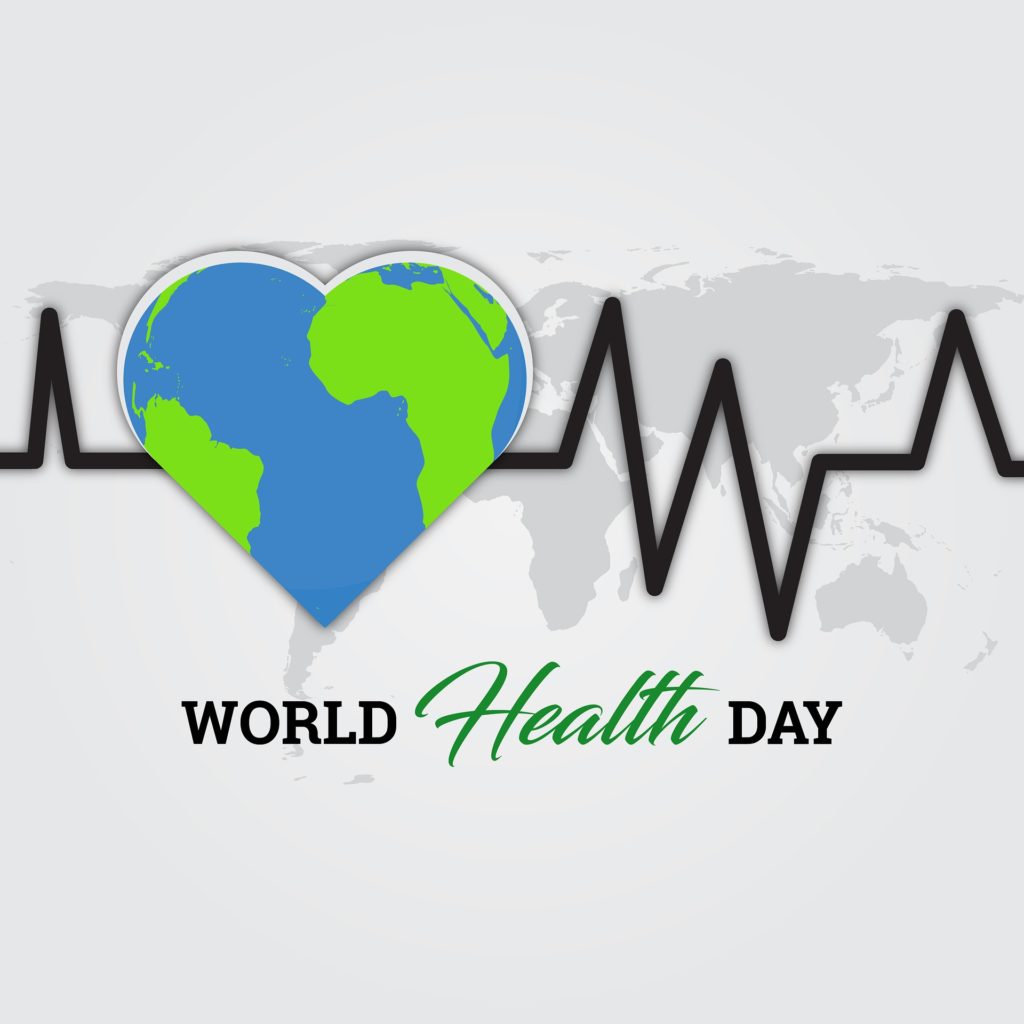World Health Day is celebrated annually on April 7 to mark the anniversary of the founding of the World Health Organization (WHO) in 1948, and to bring attention to key global health issues.
The theme of World Health Day 2022 is “Our planet, our health.”
The theme draws attention to the important links between the environment and human health. Environmental issues like the climate crisis, poor air quality and a lack of safe, clean water are problems that have a direct impact on human health and well-being.
The WHO estimates that more than 13 million deaths each year globally are due to avoidable environmental causes. This includes the climate crisis, which the agency says is the single biggest health threat facing humanity.
Related: WHO Honors the Legacy and Contribution of Henrietta Lacks
According to the global nonprofit organization water.org, 771 million people, or one in ten individuals, don’t have access to safe water to drink and 1.7 billion, which is one in four, don’t have access to safe sanitation. The WHO estimates that these numbers are higher, with 2 billion people not having access to safe drinking water.
Almost the Entire World is Breathing Dirty Air
On the air quality front, the WHO released new data this week leading up to World Health Day 2022, which shows that 99 percent of the world’s population breathes poor quality air. This is up from 90 percent four years ago.
WHO’s air quality data shows that India is home to nine of the world’s ten cities with the worst air pollution caused by a type of particulate matter pollutant known as particulate matter 2.5 (PM2.5).
Particulate matter is made up of tiny particles of solids or liquids suspended in the air. These particles may include dust, dirt, smoke, soot and drops of liquid. PM2.5 are tiny particles with a diameter of 2.5 µm or less and PM10 particles have a diameter of 10 µm or less. Both PM2.5 and PM10 come primarily from the burning of fossil fuels in cars and industries, but also from farming and desert sands.
According to the US Environmental Protection Agency (EPA), the six main air pollutants are carbon monoxide, lead, nitrogen oxides, ground-level ozone, particulate matter and sulfur oxides.
Particulate Matter (PM) and Desert Dust
PM2.5 is more dangerous than PM10 as it can infiltrate deep into the airways and enter the bloodstream to cause cardiovascular, cerebrovascular (stroke) and detrimental respiratory effects. There is also emerging evidence that PM impacts other organs and causes other diseases as well, says the WHO.
The WHO data revealed that the larger — but still harmful — PM10 pollutant was present in Bahrain, China, India, Iran, Iraq, Pakistan, South Africa and Saudi Arabia.
Mineral dust from deserts is also a significant air pollutant that is often unrecognized but has a truly global impact. Desert dust particles are classified as PM10 particulates and contain minerals like silicon, aluminum, calcium and iron particles. In March, mineral dust carried by hot air from the Sahara Desert traveled in the form of a dust storm over the Mediterranean Sea to countries in Europe like Spain, causing skies to turn orange in the country and cars and streets to be coated with the red-orange-hued dust.
World Health Day 2022: A Focus on Air Pollution and Health
According to Our World in Data, air pollution is one of the leading factors for death from causes including heart disease, stroke, lower respiratory infections, lung cancer, diabetes and chronic obstructive pulmonary disease (COPD).
In its Global Burden of Disease study in 2019, the Institute for Health Metrics and Evaluation (IHME) found that air pollution (a combination of ozone and outdoor and indoor particulate matter) ranked third after high blood pressure and smoking as a leading cause of death. It caused 6.67 million deaths that year.
In low-income countries, air pollution is usually closer to the very top of the list or is the leading risk factor.
The findings in WHO’s air quality report have led the global health agency to highlight the importance of curbing fossil fuel use and the need to take other concrete measures to reduce air pollution levels.
The WHO says air pollution is currently the world’s greatest environmental threat to health, resulting in 7 million premature deaths a year, with some estimates being even higher.
WHO Air Quality Actions
To address the world’s declining air quality, the WHO released an update to its Air Quality Database to coincide with its air quality report and World Health Day 2022. The agency said the new air quality database is the most extensive version in its coverage of air pollution exposure on the ground.
The revision includes, for the first time, ground measurements of annual mean concentrations of nitrogen dioxide (NO2), a common pollutant emitted from diesel vehicles and a precursor of particulate matter and ozone. The update also reduced acceptable limits of both PM2.5 and PM10 particle pollutants.
Encouragingly, the WHO air quality report found that over 6,000 cities in 117 countries are now monitoring air quality, including ground monitoring of PM10 and/or PM2.5, which is an almost six-fold increase in reporting since the database was introduced in 2011. Despite this, people in these countries still breathe unhealthy levels of fine particulate matter and nitrogen dioxide, with people in low and middle-income countries having the highest exposures.
Prior to the air quality database update, the WHO had updated its guidelines on air pollution limits in September 2021, the first major update to the recommendations in 16 years. This included slashing PM2.5 limits by 50 percent and nitrogen dioxide exposures by 75 percent.
The WHO’s air quality guidance isn’t legally binding but can impact the decisions of governments and world leaders. Advocates of clean air have also been calling for tighter air quality thresholds. The WHO said the stringent limits stemmed from greater research on the health impacts of even low levels of pollutants.
On World Health Day 2022, the WHO says it will “focus global attention on urgent actions needed to keep humans and the planet healthy and foster a movement to create societies focused on well-being.” Clean air and water are fundamental elements to this.












Join or login to leave a comment
JOIN LOGIN